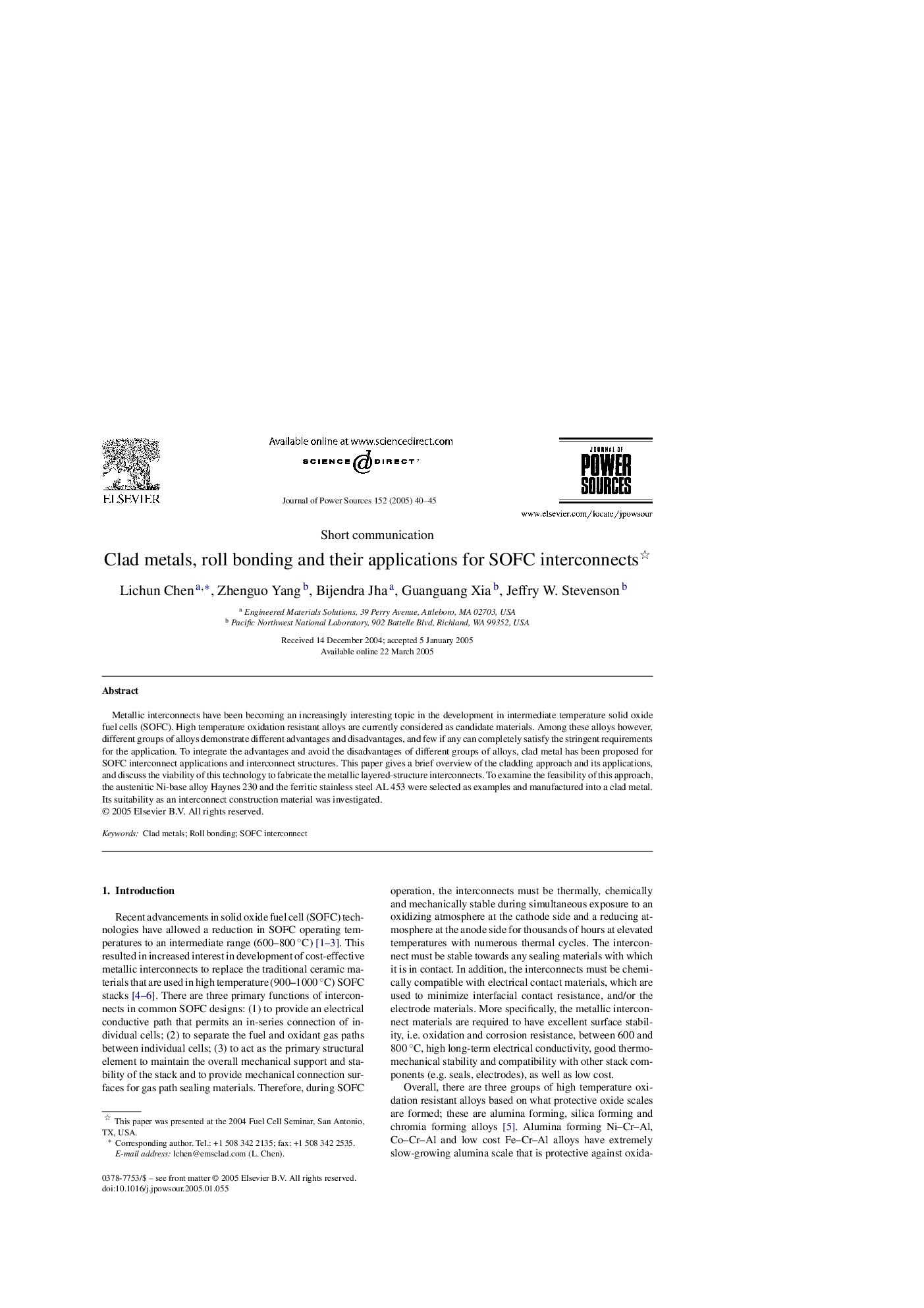| Article ID | Journal | Published Year | Pages | File Type |
|---|---|---|---|---|
| 9760105 | Journal of Power Sources | 2005 | 6 Pages |
Abstract
Metallic interconnects have been becoming an increasingly interesting topic in the development in intermediate temperature solid oxide fuel cells (SOFC). High temperature oxidation resistant alloys are currently considered as candidate materials. Among these alloys however, different groups of alloys demonstrate different advantages and disadvantages, and few if any can completely satisfy the stringent requirements for the application. To integrate the advantages and avoid the disadvantages of different groups of alloys, clad metal has been proposed for SOFC interconnect applications and interconnect structures. This paper gives a brief overview of the cladding approach and its applications, and discuss the viability of this technology to fabricate the metallic layered-structure interconnects. To examine the feasibility of this approach, the austenitic Ni-base alloy Haynes 230 and the ferritic stainless steel AL 453 were selected as examples and manufactured into a clad metal. Its suitability as an interconnect construction material was investigated.
Keywords
Related Topics
Physical Sciences and Engineering
Chemistry
Electrochemistry
Authors
Lichun Chen, Zhenguo Yang, Bijendra Jha, Guanguang Xia, Jeffry W. Stevenson,
